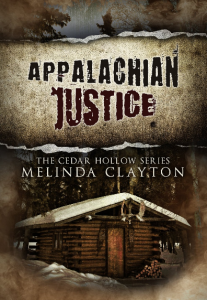 Appalachian Justice
Appalachian Justice
by Melinda Clayton
Genre: Historical fiction, general fiction
Word count: 73,600
Billy May Platte is a half Irish, half Cherokee Appalachian woman who learned the hard way that 1940s West Virginia was no place to be different.
As Billy May explains, “We was sheltered in them hills. We didn’t know much of nothin’ about life outside of them mountains. I did not know the word lesbian; to us, gay meant havin’ fun and queer meant somethin’ strange.”
In 1945, when Billy May was fourteen years old and orphaned, three local boys witnessed an incident in which Billy May’s sexuality was called into question. Determined to teach her a lesson she would never forget, they orchestrated a brutal attack that changed the dynamics of the tiny coal mining village of Cedar Hollow, West Virginia forever.
Global Ebook Gold Winner in 2013, a finalist for the University of North Carolina-Wilmington’s Synergy Program in 2013, and voted Sapphic Readers Book Club Book of the Year in 2011 (under a different imprint), Appalachian Justice is a work of southern fiction that delves into social issues such as poverty, domestic violence, misogyny, and sexual orientation. Ultimately, however, Appalachian Justice delivers a message of hope.
This book is available from Amazon, Smashwords, and Barnes & Noble. Continue reading “Book Brief: Appalachian Justice”
Like this:
Like Loading...
 This is part 2 of a 2 part guest post
This is part 2 of a 2 part guest post


